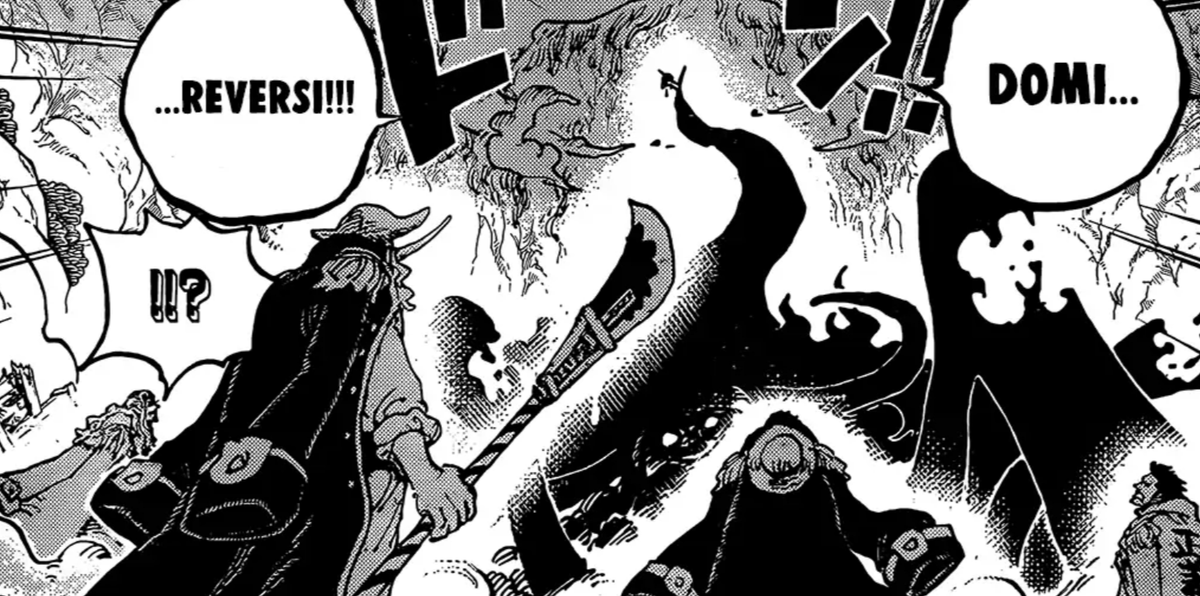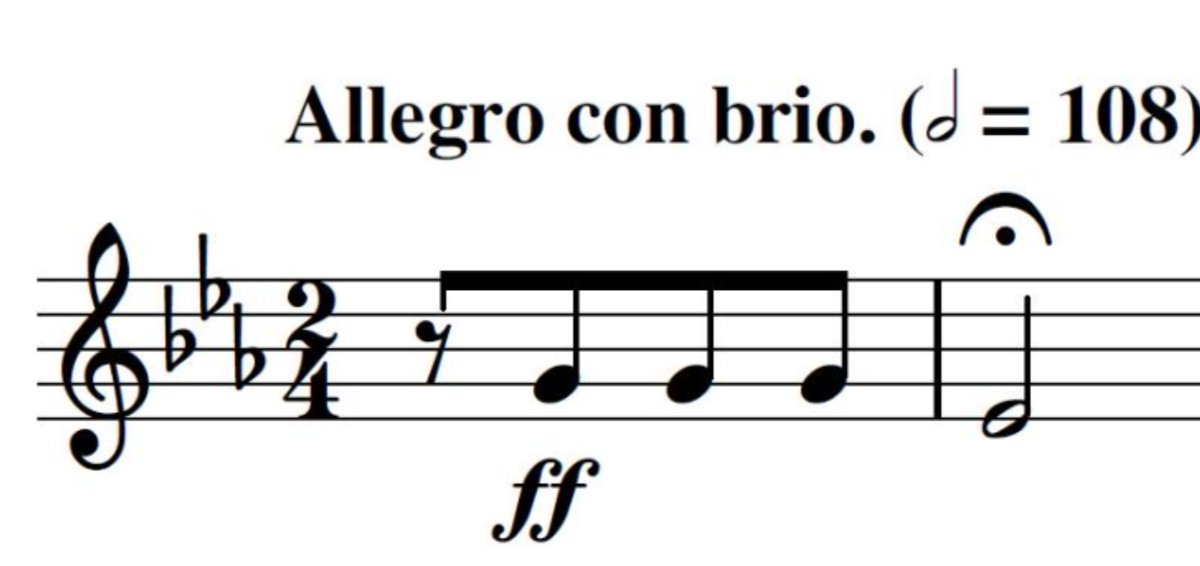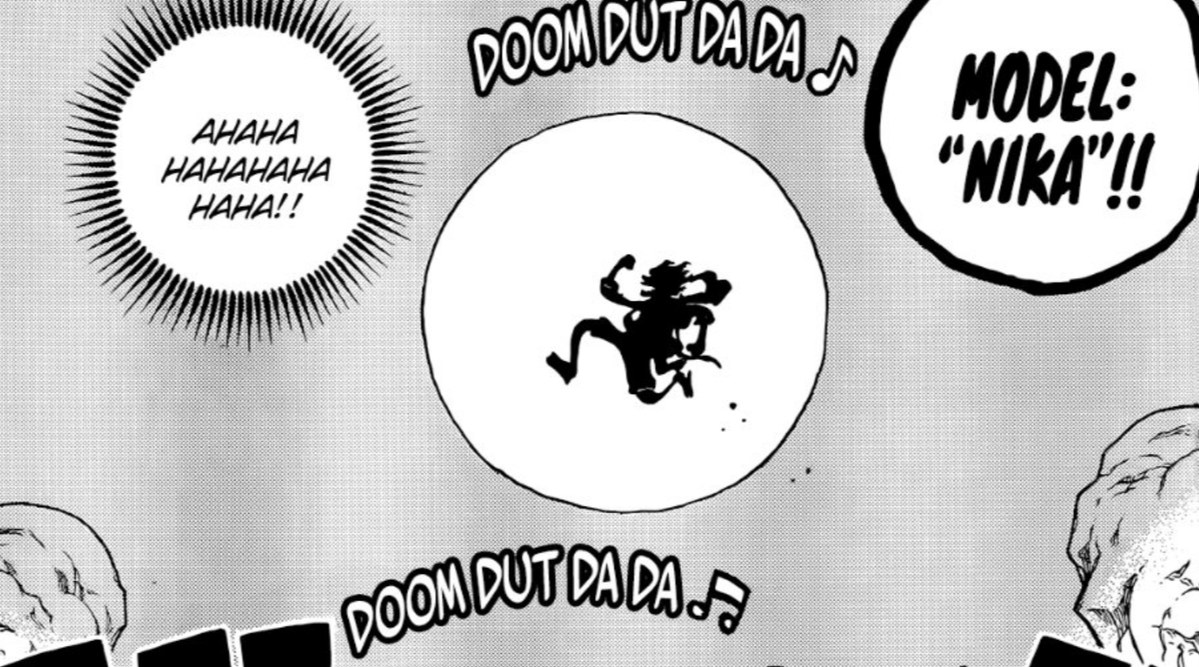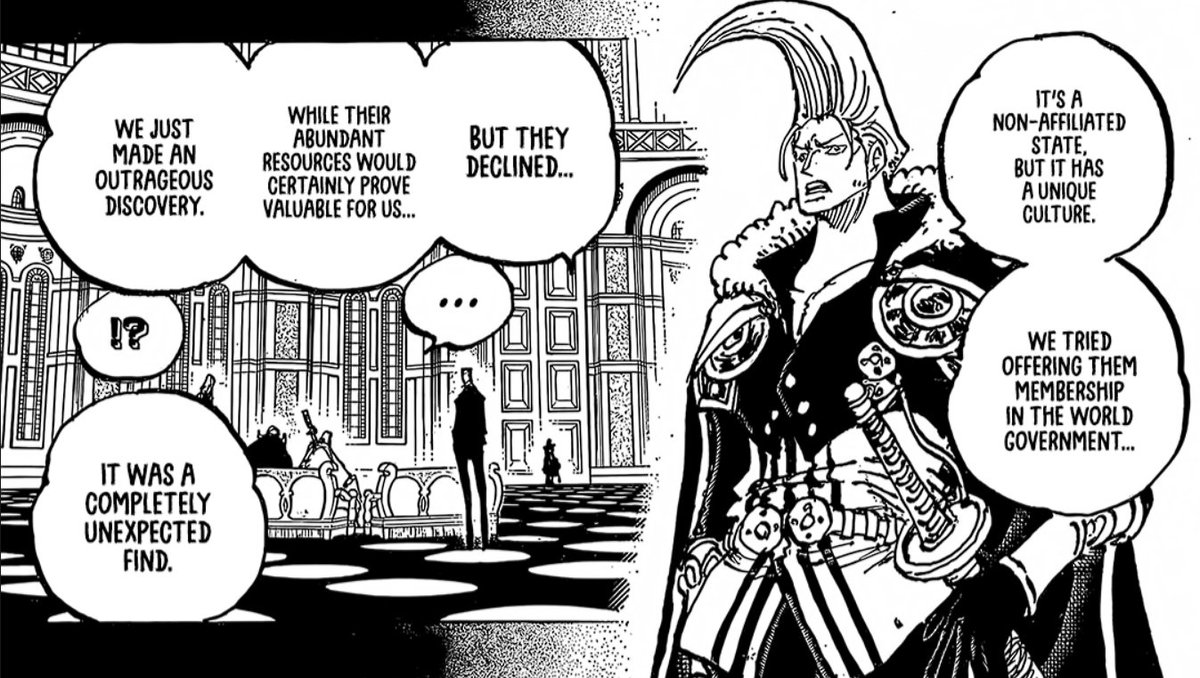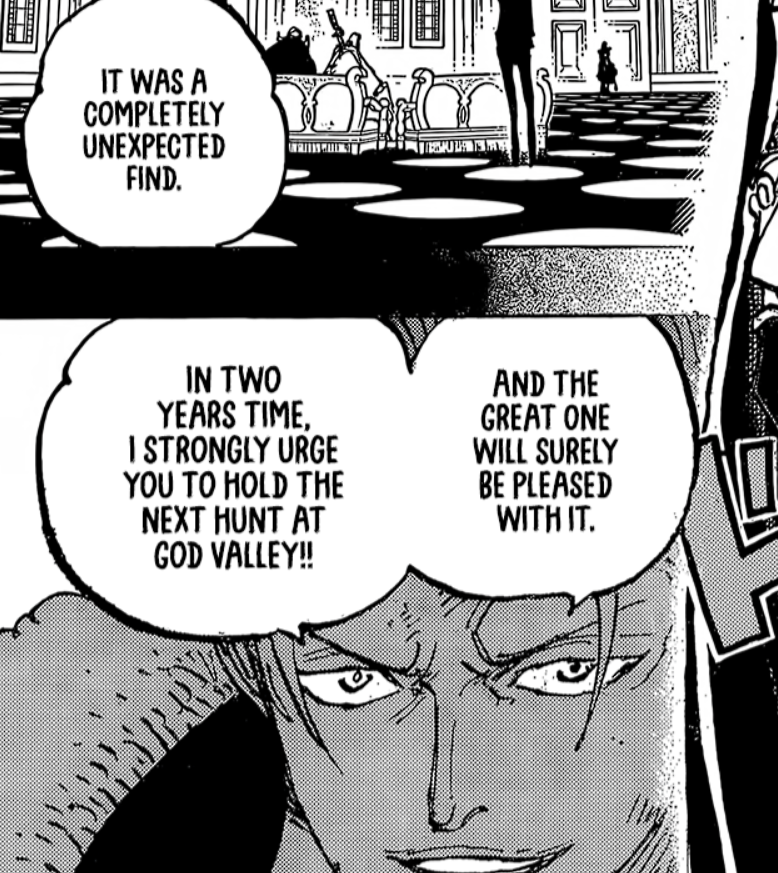This thread will aim to establish what the true story of Nefetari Lili may be.
In order to do this, we'll look at likely real world inspirations, and details from within the manga itself that may connect.
Let's get in to it.
In order to do this, we'll look at likely real world inspirations, and details from within the manga itself that may connect.
Let's get in to it.
Firstly, let's consider the potential inspirations from real world scriptures.
Lilith (Lili) is mentioned across many different scriptures, dating back millennia. These include, The Bible, Hebrew scriptures, and even Sumerian scriptures, dating back as far as 2000 BCE Babylonia
Lilith (Lili) is mentioned across many different scriptures, dating back millennia. These include, The Bible, Hebrew scriptures, and even Sumerian scriptures, dating back as far as 2000 BCE Babylonia

The earliest known reference to Lilith (Lili) comes from the Sumerian epic, Gilgamesh and the Huluppu Tree.
The story recounts how Lilith fled her home in the Garden of Innana, the Godess of Erotic Love. When the hero Gilgamesh appeared and slayed the Dragon.
The story recounts how Lilith fled her home in the Garden of Innana, the Godess of Erotic Love. When the hero Gilgamesh appeared and slayed the Dragon.

This story bares many striking similarities to the story of the Garden of Eden, and it may even be the from which it originates.
Through the passage of time and civilisations, Lilith became known as the, 'Primordial She-Demon.'
Through the passage of time and civilisations, Lilith became known as the, 'Primordial She-Demon.'

Eventually, in the Christian faith, mention of Lilith became considered blasphemous and heretical, in part because it offers contradiction to the story of Adam and Eve.
This is why there is only one mention of Lilith in the Bible. The Old Testament's Book of Isaiah. 34:14
This is why there is only one mention of Lilith in the Bible. The Old Testament's Book of Isaiah. 34:14

Perhaps this is what Oda is referencing when Cobra says that the ancient texts do not mention Lili.
The Book of Isaiah says that Lilith was banished from the Garden of Eden for disobeying Adam.
However, it was said that Lili left Mariejois of her own accord.


The Book of Isaiah says that Lilith was banished from the Garden of Eden for disobeying Adam.
However, it was said that Lili left Mariejois of her own accord.



Other such Hebrew scriptures offer an alternate perception of the story.
According to, The Treatise on the Left Emanation, by Isaac ben Jacob ha-Cohen -
"Lilith was not banished, but left of her own choice, after defying to obey Adam."
According to, The Treatise on the Left Emanation, by Isaac ben Jacob ha-Cohen -
"Lilith was not banished, but left of her own choice, after defying to obey Adam."

Perhaps this is the root inspiration that Oda is drawing from for the story of Lili.
She left Mariejois after defying to obey Imu, and since then, the ancient texts do not mention her.


She left Mariejois after defying to obey Imu, and since then, the ancient texts do not mention her.



Isaac ben Jacob ha-Cohen also claimed that Lilith did not return to the Garden of Eden, because she was seduced by the archangel, Samael. aka. Lucifer.
God's Natural Enemy.
God's Natural Enemy.

As a slight tangent, this detail may lend some credibility to the recent theory that Amazon Lily was founded, or inspired by Nefertari Lili.
Lili being seduced by Lucifer may be the inspirational basis for the Amazonian Love Sickness.
Lili being seduced by Lucifer may be the inspirational basis for the Amazonian Love Sickness.
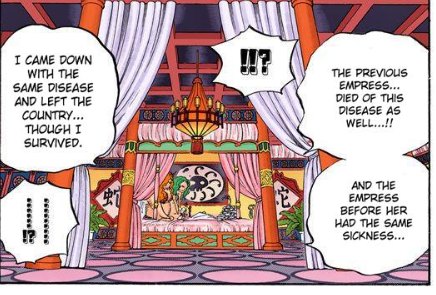
That now gives us a natural segue to discussing Lili within the One Piece story itself.
If we take these potential inspirations together, it gives us a good idea of the basis of Lili's story.
She defied Imu, and left Mariejios, and was later seduced by 'God's natural enemy.' D.
If we take these potential inspirations together, it gives us a good idea of the basis of Lili's story.
She defied Imu, and left Mariejios, and was later seduced by 'God's natural enemy.' D.

The idea that Lili defied to obey Imu would track with the fact that she refused the oath of the Empty Throne, and the idea that she left Mariejois also tracks with what we now know.
However, that might not be all that we know already.
However, that might not be all that we know already.

Through Alabasta, and Wano, we have learned that the Ancient Weapon, Pluton is hidden in the ancient city of Wano, and the corresponding Poneglyph is hidden in Alabasta's royel crypt.
Cobra mentions that Lili never made it home, so she must have fled somewhere. Perhaps to Wano.
Cobra mentions that Lili never made it home, so she must have fled somewhere. Perhaps to Wano.

It seems very likely that Lili was the one behind the plan to seal Pluton, and this would explain why the corresponding Poneglyph is hidden in Alabasta's royal crypt, behind a mysterious tomb given pride of place. 



The connection of the Alabasta royal crypt also reveals other potentially significant details.
Not only is there a tomb that may well be Lili's empty tomb, there is also a giant tapestry carved in to the walls.
This tapestry may depict the sealing of the Ancient Weapons.
Not only is there a tomb that may well be Lili's empty tomb, there is also a giant tapestry carved in to the walls.
This tapestry may depict the sealing of the Ancient Weapons.

It could be then, that Lili was responsible not only for the sealing of Pluton, but of all three of the Ancient Weapons.
The detail of Lili's letter creates a parallel to Joyboy's letter to Poseidon, and a possible connection between the two.
The detail of Lili's letter creates a parallel to Joyboy's letter to Poseidon, and a possible connection between the two.

When we look at some of the cover pages featuring Vivi, the titles seem to form hidden messages. One of them invokes the idea that Vivi and Lili look exactly alike.
https://twitter.com/3SkullJoe/status/1659267468513222665?s=20
People such as @NamiOrigins & @imthedauntlessJ have also pointed out interesting details
https://twitter.com/3SkullJoe/status/1658927788861038594?s=20
Another of these apparent hidden messages seems to all be in reference to Poseidon.
This may explain the context of Lili's letter, and, as people such as @ThiefOfFiction have pointed out, it may explain why Vivi is protective of Shirahoshi.

This may explain the context of Lili's letter, and, as people such as @ThiefOfFiction have pointed out, it may explain why Vivi is protective of Shirahoshi.


With this in mind, it seems there is another hidden messaeg in Vivi's cover pages, this one relating to the plot line of Poseidon. -
https://twitter.com/3SkullJoe/status/1659272376436105246?s=20
This makes it seem very likely that Lili's letter is directly connected to the apology letter that Joyboy wrote to Poseidon. 

So it could be that Lili was the one who organised the sealing of the Ancient Weapons, and this could explain why Joyboy had to leave Poseidon behind.
This may also explain the origins of Toki, who was born at the end of the Void Century. Perhaps she was Lili's daughter.
This may also explain the origins of Toki, who was born at the end of the Void Century. Perhaps she was Lili's daughter.

If true, this would explain why Toki was sent forward in time, and tasked with reaching Wano again in order to herald in the, 'Dawn of the World.'
On top of that, it would also relate to the scriptures that claim that Lilith, 'cohabited,' with Lucifer.
On top of that, it would also relate to the scriptures that claim that Lilith, 'cohabited,' with Lucifer.

To conclude. I believe that this may be the story of Nefetari Lili.
She defied to obey Imu, left Mariejois, and conspired to help the remnants of the Ancient Kingdom to seal the Ancient Weapons, and her story holds the truth about the origins of the D. Clan.


She defied to obey Imu, left Mariejois, and conspired to help the remnants of the Ancient Kingdom to seal the Ancient Weapons, and her story holds the truth about the origins of the D. Clan.



I'll leave you with one last observation.
The Gorosei seem visibly shaken by the revelation that a letter from Lili exists.
This connects directly to the idea that the Poneglyphs were created for fear of paper documents being erased, which is what happened in Shandora.



The Gorosei seem visibly shaken by the revelation that a letter from Lili exists.
This connects directly to the idea that the Poneglyphs were created for fear of paper documents being erased, which is what happened in Shandora.




This may explain the significance of Lili's letter, as the original reason for the creation of the Poneglyphs.
To ensure that Lili's message was not erased.
The True History.
"I hereby guide this document to it's end."
Lili's letter is the 'Real Poneglyph.' !
To ensure that Lili's message was not erased.
The True History.
"I hereby guide this document to it's end."
Lili's letter is the 'Real Poneglyph.' !

That's all I've got for this one, thanks for reading 🙏
• • •
Missing some Tweet in this thread? You can try to
force a refresh



